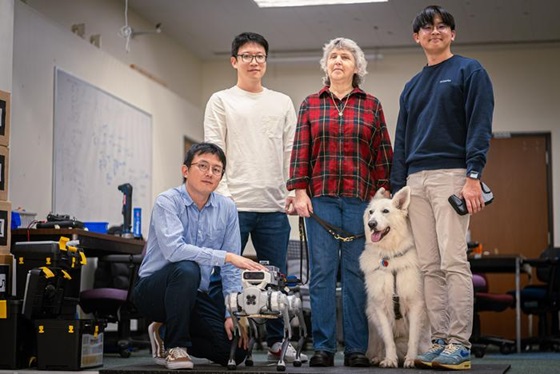Research led by the University of Massachusetts Amherst emphasizes the importance of input from guide dog users and trainers in developing effective robotic guide dogs. This study, which received the Best Paper Award at the CHI 2024 Conference on Human Factors in Computing Systems, highlights the necessity of understanding the real-world needs of visually impaired individuals for robotic guide dogs to be practical.
Guide dogs offer autonomy and mobility, but their accessibility is limited by factors such as cost, allergies, and physical limitations. Robotic guide dogs present a potential solution, but only if designed with the right features. Donghyun Kim, assistant professor at UMass Amherst and co-author of the paper, notes that previous attempts over 40 years have failed to produce robots used by end users, highlighting the need to understand current guide dog usage and desired technological features before development.
The research involved interviews and observation sessions with 23 visually impaired guide dog handlers and five trainers, focusing on the limitations of current guide dogs and desired traits in robotic alternatives. One critical insight was the balance between robot autonomy and human control. Unlike autonomous cars, guide dogs are controlled by handlers for overall route navigation while the dogs manage local obstacle avoidance. This nuanced interaction suggests that robotic guide dogs must balance autonomy and user control to ensure safety and comfort.
The study revealed practical design considerations, such as the necessity of a two-hour battery life to support typical commuting durations, as 90% of participants emphasized this feature. Other suggested improvements include adding more camera orientations to detect overhead obstacles, incorporating audio sensors for hazards, and enabling navigation cues like following a sidewalk.
The research team, including Ivan Lee from UMass Amherst, Joydeep Biswas from the University of Texas Austin, Hee Tae Jung from Indiana University, and Nicholas Giudice from the University of Maine, hopes this paper will guide future development of robotic guide dogs. Winning the Best Paper Award underscores the research community’s recognition of this approach.
Kim stresses the importance of keeping the human element in mind in robotics. “My Ph.D. and postdoctoral research is all about how to make these robots work better,” he says, emphasizing the goal of creating practical and meaningful applications for humanity.
Photo: Donghuyn Kim, Ivan Lee, Dog Handler and Hochul Hwang, credit Zinj Guo

